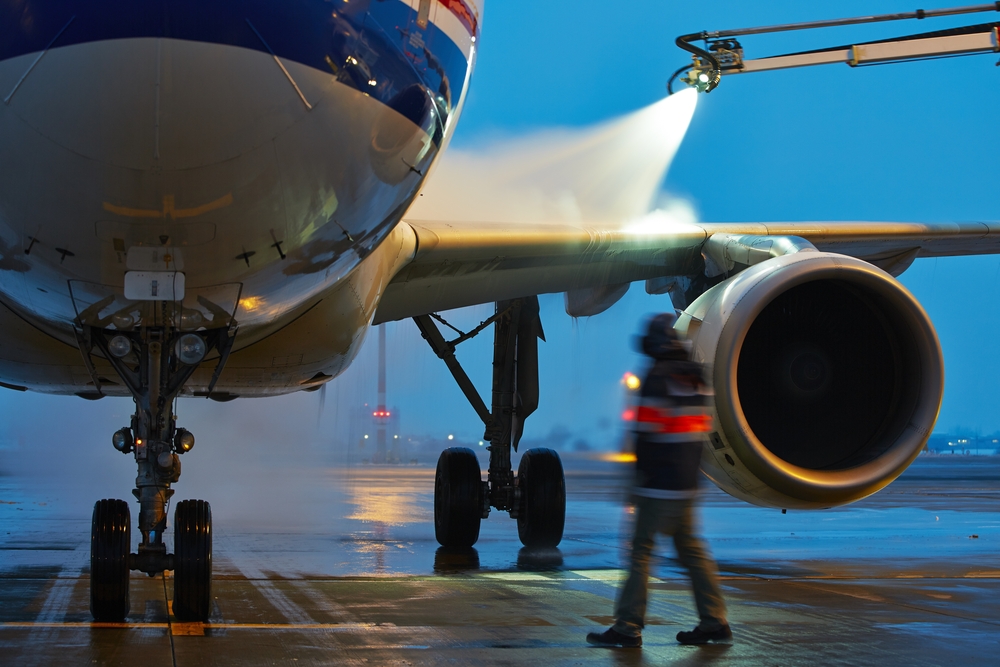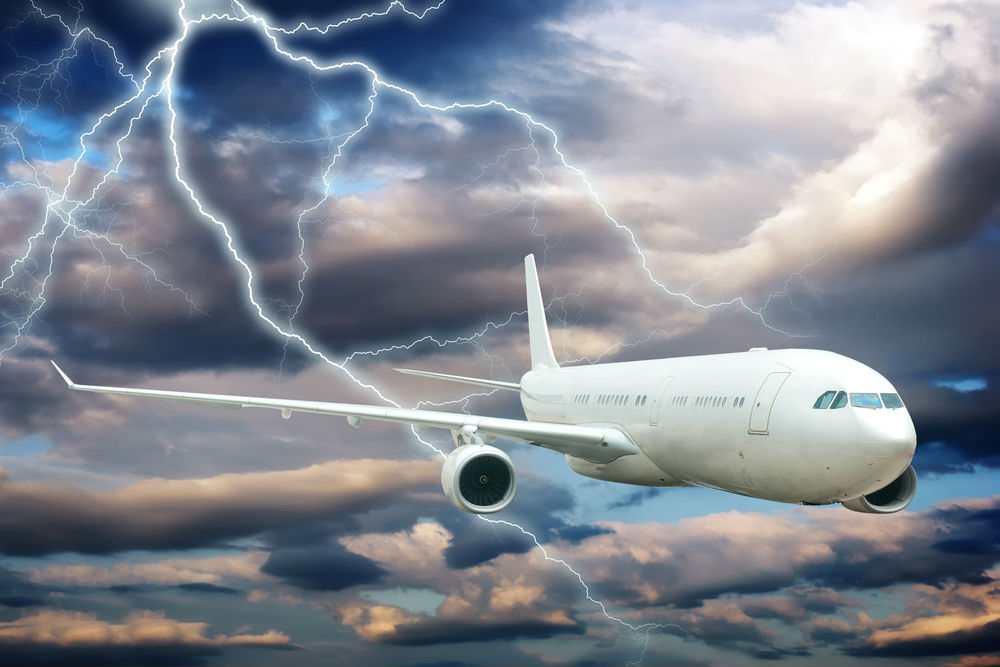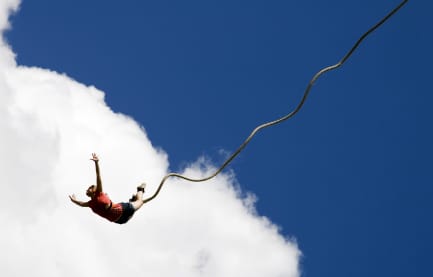The day of your flight has arrived, and you’re about to head to the airport with your printed boarding pass in hand and your pre-paid check-in luggage in tow (yeah, you’re responsible like that). But what’s that you see overhead? A dark cloud floating yonder, moving your way? No matter how well you prepare for a flight, there is one thing even an organized traveler can’t control: Mother Nature. She will exact her wrath when she feels like it, and she won’t be reasoned with. But is flying through a storm safe, or is the guy in 14C justified to be white-knuckling his armrest and blaring a meditation mix in his earphones? Flights.com is here to put your mind at ease about flying through tumultuous conditions. Spoiler: Your aircraft is carefully designed to ensure a safe landing in nearly every type of weather.
Why are they de-icing the plane?
If you’re flying out of Chicago, Minneapolis, or other snow-blanketed cities in the wintertime, de-icing is pretty common. Still, from the (dis)comfort of your window seat, that billow of mist hitting the wings can be disconcerting. So why is there a truck outside showering your aircraft with what looks like a smoke machine from an early aughts spring break party? Your pilot gives the plane a once-over before every flight, and if she sees frost sticking to certain parts of the aircraft, a de-icing is in order.
During de-icing, a hot blend of glycol and water dissolves frost and stops it from sticking to the plane. If left untreated, frost can impede air flow and prevent your aircraft from getting the proper lift at take-off. So, the next time you see the de-ice trucks pulling up, don’t break out a pair of Depend® underwear. Breathe a sigh of relief and give the truck operator a mental high-five.
Should we really be flying in rainstorms?
Here’s the thing. The prospect of taking off in torrential downpours gives plenty of people the willies. But the FAA (Federal Aviation Administration) has your back. All aircraft are required by the FAA to meet certain safety thresholds, including standing up to a good old-fashioned thunderstorm. Flying through clouds, especially when it’s raining cats and dogs, might have you throwing back your Jack and Coke faster than you anticipated – but your plane is designed to handle a significant rainstorm. It won’t go springing a leak like the studio walk-up you rented that one summer in Brooklyn.
The one exception to this rule is freezing rain, which might cause ice to accumulate on the wings faster than a de-icing solution can dissolve it. In that case, you won’t take off at all. So, while you’ll be stuck reading an outdated Us Weekly in the terminal – you’ll be safe.
What if a plane gets hit by lightning?
One of the main concerns people have about flying in bad weather is lightning. Sure, while a lightning strike worked out for our pal Benjamin Franklin (thanks for electricity, Benji), you don’t want to be the one getting zapped like a mosquito. We hate to break your bubble, but every single U.S. airliner in service gets hit by lightning about once a year. As you might guess, if lightning posed any serious danger to flights, you would have heard more about it by now. Much like you’re safe in a car that gets hit by a bolt, provided you’re not touching its metal frame, airline passengers are safe from in-flight lightning strikes.
The electrical current generated by lightning will move from its origin point along the metal body of your plane, and then exit (likely at the tail). Inside the plane, you’re protected by a design that carefully ensures you and your seat can’t be an electrical conductor. Go ahead, shut your eyes and catch up on the latest Serial podcast.
How much wind is too much wind?
We all know the feeling of a leaping stomach during spells of turbulence in the air. In-flight bumps and jostles aren’t always caused by wind, but aircraft turbulence can be the result of a strong jet stream or windy storm. The good news is that flying in extreme winds is generally safe, even if it does cause you to spill your cocktail or mean you can’t use the restroom for a while. During take-off and landing, winds are really only a factor when they’re crosswinds. Even then, your plane can withstand around 25 knots (or about 30 mph) of wind coming across the runway.
See, guys, flying through a storm isn’t so bad. We can’t promise you won’t need to keep your barf bag close, but you’re gonna make it to your destination just fine. Happy travels!






Thank you .
Feel significantly reassured.
God only knows,I suppose /you mean!!
Sastry v.Neti
Thank you for this blog. Do you have more topics and discussions for nervous fliers? I flew before a few times, but I have nervous lately (and not sure why). The thought of being off the ground, the pilots(how tired are they? How can they handle long flights?) and of course the turbulence. How often is there turbulences? What causes severe turbulence? So much more.